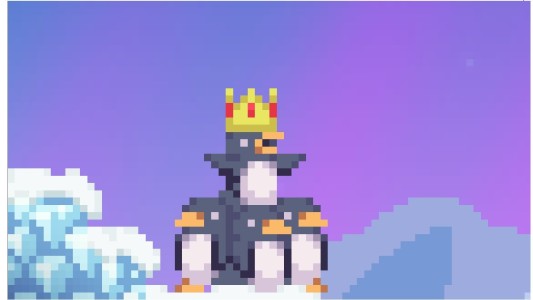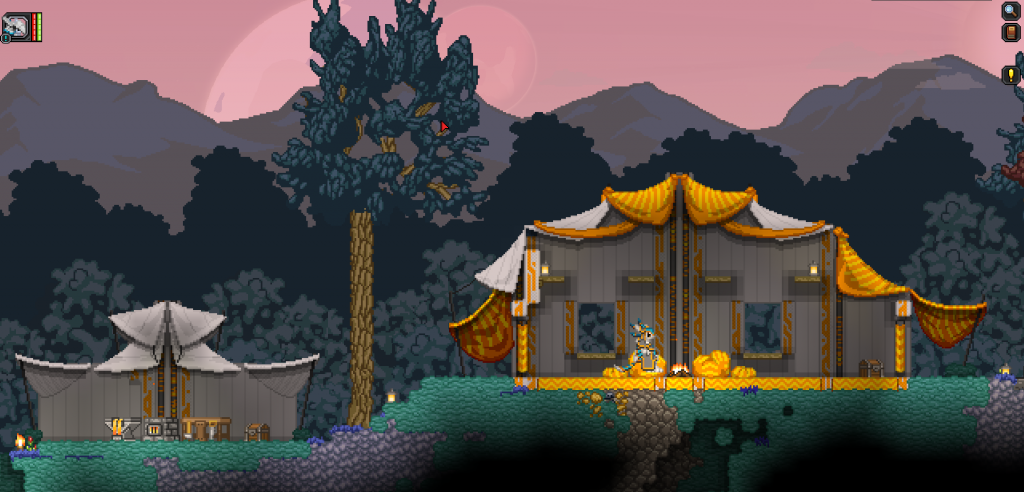Just imagine, for one moment, that you are an alien. You can be any kind of alien you’d like, whether you choose to be an ape, a bird, or even a robot. Imagine you own a spaceship and crash-land on a primitive planet with hostile inhabitants and plenty of resources that are yours for the taking. This is the premise for Starbound.
Starbound is an extremely cool sandbox exploration game set in space. The game was released as an early access game on Steam on December 4, 2013, by Chucklefish, a fairly new indie game company. The amount of attention this game got was pretty crazy. At least 15 or more major YouTubers started a series on this game when it was first released. I watched a few people play it, and I was immediately hooked. I went straight to my computer, bought the game, and played it. The concept itself is pretty awesome. You’re an alien (or human) who is stranded on a two-dimensional planet because your spaceship ran out of fuel. It’s up to you to use the matter manipulator to gather resources, build a shelter, and hunt to survive.

the Penguin
The art style is really something, a Terraria-like two dimensional pixel design, but with smoother color transition so that it has a better sense of flow. Plus, all the animations for the NPCs and the monsters look amazing. Another thing about the game’s visual style is that, not only are the planets procedurally generated, but so are the enemies. You can be fighting an evil penguin ruler on one planet and a charging dinosaur on the next. There’s eyeball trees and elaborate bird temples. Those are just some of the things that give Starbound it’s uniqueness and personality.
To advance in the game you must get fuel for your ship and collect metals to build a distress beacon, which you use to send a signal to a ship nearby. After making contact with the ship, you gain the ability to travel from the starter alpha sector to the more advanced beta sector where better materials are more common and the monsters get meaner. From there you explore for generated structures with loot, mine for materials, and make better armor in order to fight a boss to advance to the gamma sector, where titanium and diamonds abound.
One of the things I didn’t quite like in Starbound was the lack of ability to reassign keys to different actions. Now, I understand that this is the beta stage of the game, and Chucklefish is working on a lot of different features, but from my experience with programming it wouldn’t be that hard to add key assignments. It is frustrating that after playing a bit of Minecraft, I can’t use the same main button to interact with the game.
Some of the special game mechanics that stand out are called Tech. You can find special chests around the planet, which contain a tech. You can equip it by holding it in your hand and clicking on your character. After that you can access the ship’s tech station to manage the different tech you’ve found. Some of the basic tech found in the alpha sector include Pulse Jump and Energy Dash, a double-jump and burst of speed respectively. Some of the more advanced tech include a robotic mech and a butterfly boost, which basically allows flight. What all of these have in common is that they require energy. Your energy level is denoted by a green bar below your health in the top-left of the screen. Your energy regenerates over time, but you can increase your energy storage by wearing certain types of armor. Other things that use the energy bar are weapons such as guns and bows.
Another feature that stands out is 3-D printing. 3-D Printing is a mechanic in the game that allows you to scan decorative items or furniture and use pixels to recreate them. What are pixels, you might ask? Pixels are the game’s currency. Pixels are dropped by monsters, discovered in chests, and generally found throughout the planet. You also lose 30% of them on death if playing on normal mode or higher. But going back to 3-D printing, you can scan items and print identical copies with pixels. The amount of pixels required depends on the rarity of the item. Also note that items that are scanned are destroyed in the scanning process. 3-D printing is a good way to duplicate decorative items found in the world in order to build a large-scale structure, like a temple or an abandoned laboratory.
As you can see, Starbound is a great game with lots of personality and potential. The beta on Steam is $14.99, but as with many other games, it will increase after the official release. I hope you have a great time with this game and enjoy it as much as I do.

